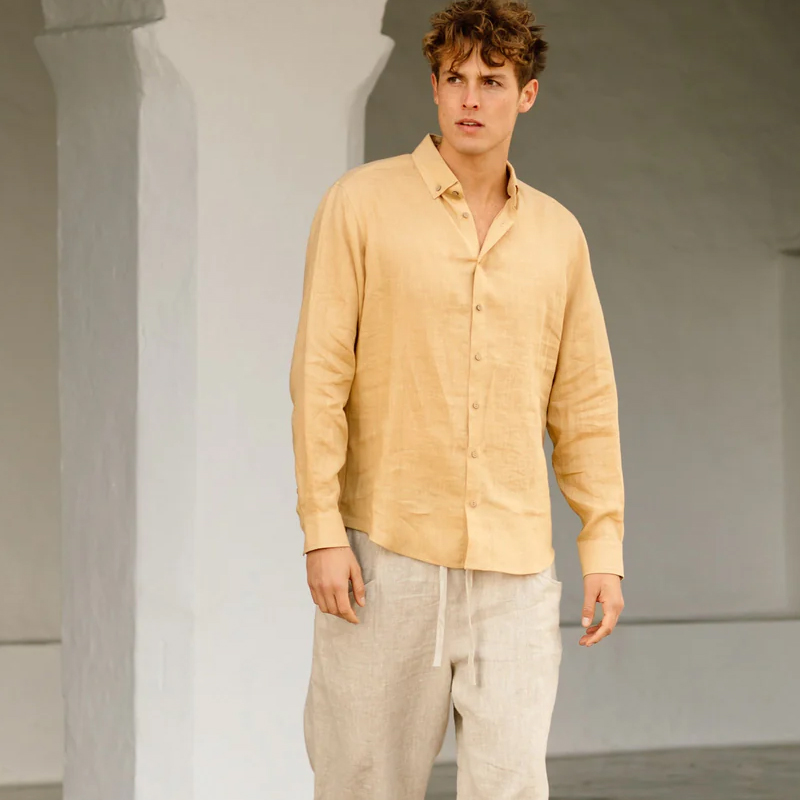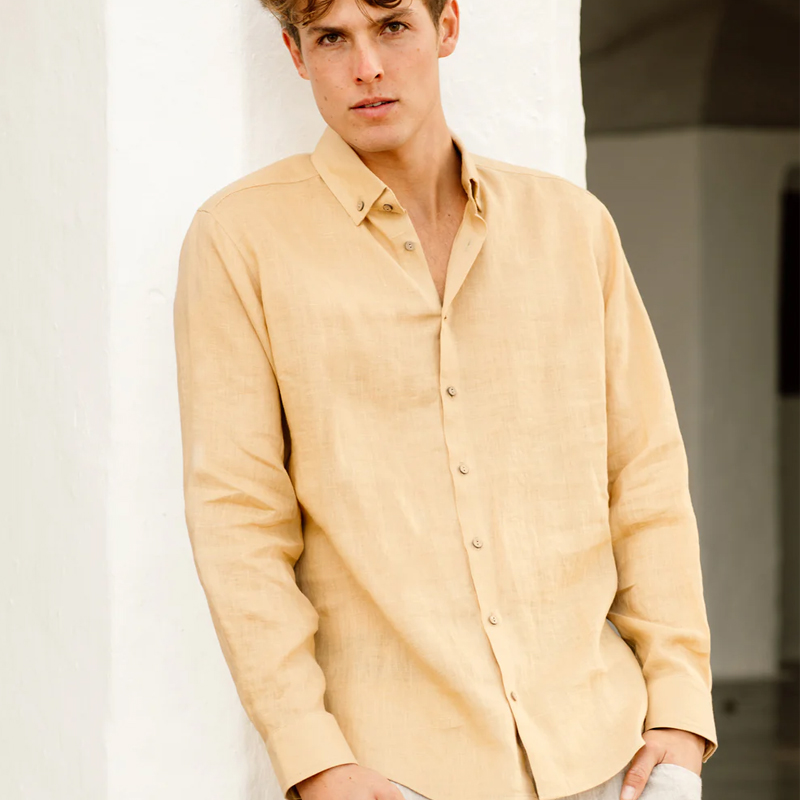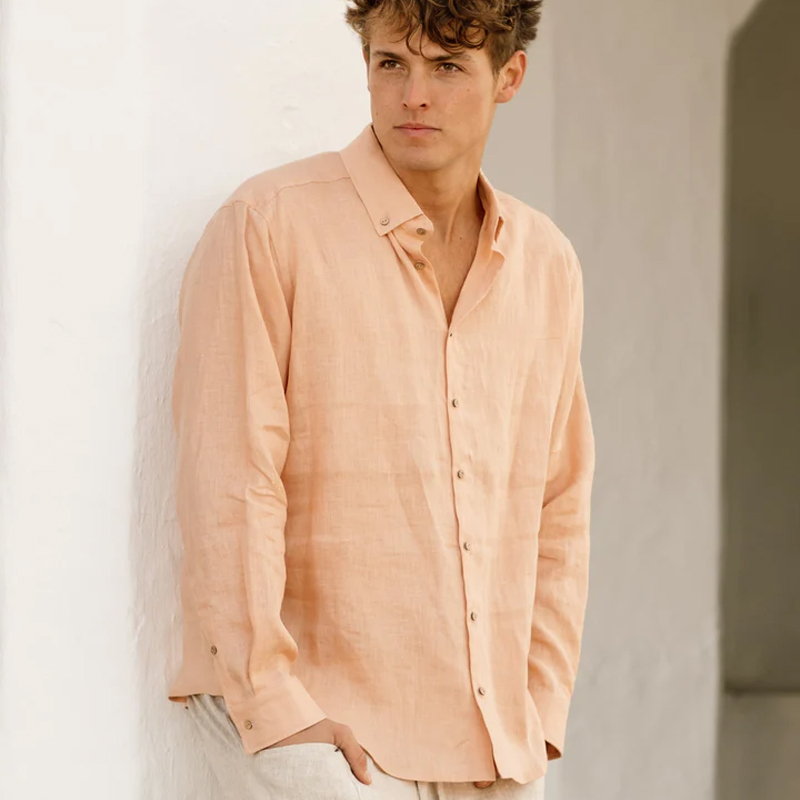Soft, Breathable Baby Linen Clothes & Organic Cotton Styles
Sep . 12, 2025 07:40 Back to list
Soft, Breathable Baby Linen Clothes & Organic Cotton Styles
Industry Trends and Market Dynamics for Premium Children's Apparel
The global market for children's apparel is undergoing a significant transformation, driven by increasing consumer demand for sustainable, hypoallergenic, and durable clothing options. Within this evolving landscape, baby linen clothes represent a rapidly expanding segment, appealing to discerning parents and B2B buyers seeking high-quality, natural fiber garments.
Linen, derived from the flax plant, is celebrated for its inherent properties: exceptional breathability, moisture-wicking capabilities, and robust durability. These attributes make it an ideal material for infant and toddler wear, particularly in warmer climates or for sensitive skin. Market research indicates a compound annual growth rate (CAGR) of approximately 6.5% for natural fiber children's apparel from 2023 to 2028, with linen-based products experiencing even higher specific growth due to their perceived premium quality and eco-friendly profile. This trend extends beyond infants to linen clothes kids collections, signifying a broader market shift towards sustainable fashion choices for all ages.
The demand for cotton and linen baby clothes blends also highlights a consumer preference for combining the softness of cotton with the textural richness and breathability of linen, offering versatility and enhanced comfort. As a result, manufacturers and wholesalers are increasingly focusing on specialized production lines capable of delivering innovative textile solutions that meet stringent safety and quality standards while catering to aesthetic preferences.

Manufacturing Process Flow of Premium Linen Apparel
The production of high-quality baby linen clothes involves a meticulously controlled process, from raw flax fiber to finished garment. Adherence to international standards ensures the final product's integrity and safety for infants. The target industries for these products primarily include boutique children's wear retailers, private label brands, sustainable fashion distributors, and specialized e-commerce platforms focused on natural and organic baby products.
Key Stages in Linen Production:
1. Flax Cultivation & Harvesting
Flax (Linum usitatissimum) is cultivated in specific regions globally. Harvesting occurs when the plant is mature, typically by pulling the entire plant from the ground to maximize fiber length.
2. Retting (Decortication)
This critical biological process separates the useful fibers from the woody stalk. Methods include dew retting (natural exposure to moisture) or water retting (submersion), controlled to achieve optimal fiber separation without degradation.
3. Scutching & Hackling
Scutching removes the woody shives, leaving rough fibers. Hackling then combs these fibers, aligning them parallel and removing shorter fibers (tow), resulting in long, lustrous line fibers suitable for spinning.
4. Spinning
The hackled flax fibers are drawn out and twisted together to form linen yarn. Wet spinning is commonly used for finer yarns, while dry spinning is for coarser varieties.
5. Weaving & Finishing
Linen yarn is woven into fabric, often in plain, twill, or herringbone weaves. Finishing processes include scouring, bleaching (if desired), dyeing, and softening treatments to enhance drape and feel.
6. Cutting, Sewing & Quality Control
Fabric is cut according to patterns, sewn into garments, and undergoes rigorous quality control checks for dimensions, stitching integrity, colorfastness, and absence of defects. Final products are often tested to standards like Oeko-Tex Standard 100 to ensure they are free from harmful substances.
Testing Standards and Service Life:
Products undergo comprehensive testing to meet international standards such as ISO 105 (Colorfastness), ISO 12947 (Abrasion Resistance), and Oeko-Tex Standard 100 (Absence of Harmful Substances), which is critical for infant wear. The inherent strength of linen fibers contributes to an exceptional service life, often exceeding that of cotton. With proper care, baby linen clothes maintain their structural integrity and aesthetic appeal for years, offering enhanced value and sustainability.
Typical application scenarios demonstrate significant advantages, including superior thermoregulation (energy saving due to reduced need for cooling in warm environments), natural anti-bacterial properties (reducing skin irritation), and resistance to pilling and stretching, ensuring garments retain their shape and appearance through numerous washes. While "corrosion resistance" is not directly applicable to textiles, linen's natural resistance to degradation from moisture and UV radiation contributes to its longevity and low environmental impact compared to synthetic alternatives.
Technical Specifications and Fabric Parameters
Understanding the technical specifications of linen fabrics is crucial for B2B procurement, ensuring that the selected materials meet specific performance and aesthetic requirements for baby linen clothes. Key parameters include fiber composition, fabric weight, weave type, and various performance indicators.
Typical Linen Fabric Specifications for Baby Apparel:

These parameters collectively define the performance and suitability of linen fabrics for infant wear. The relatively low GSM ensures lightness and comfort, while high air permeability is crucial for thermoregulation, preventing overheating. The specified pH range is vital for protecting delicate baby skin, minimizing the risk of irritation. For cotton and linen baby clothes, the blend offers a balance of linen's crispness and cotton's softness, often resulting in slightly higher GSM values while retaining excellent breathability.
Application Scenarios and Product Versatility
The versatility of linen makes it suitable for a diverse range of baby linen clothes, extending into children's and even adult wear for coordinated collections. B2B clients leverage linen's premium appeal for various product lines and market segments.
- ✓ Everyday Comfort Wear: Rompers, bodysuits, and lightweight sets crafted from linen offer unparalleled comfort for daily activities, ensuring babies remain cool and unhindered. Its natural texture and aesthetic provide a sophisticated yet casual look.
- ✓ Special Occasion Attire: Due to its elegant drape and luxurious feel, linen is ideal for christening outfits, birthday dresses, and formal wear for infants and toddlers. Brands can differentiate their offerings with premium baby linen clothes that combine comfort with sartorial elegance.
- ✓ Summer & Tropical Collections: Linen's exceptional breathability and moisture-wicking properties make it the fabric of choice for summer collections. It helps regulate body temperature, making it perfect for warm weather apparel like shorts, short-sleeved shirts, and sundresses. This application extends to linen clothes kids ranges, providing parents with practical and stylish options for their older children.
- ✓ Transitional and Layering Pieces: Blends such as cotton and linen baby clothes offer enhanced versatility for layering during transitional seasons, providing warmth without bulk. This allows for adaptability in varying environmental conditions.
- ✓ Parent-Child Matching Collections: The demand for coordinated family outfits is growing. Manufacturers can leverage their expertise in baby linen clothes to offer complementary linen set clothes women and men's items, broadening their market appeal and enabling retailers to offer holistic lifestyle collections.
- ✓ Sleepwear and Nursery Linens: The hypoallergenic and temperature-regulating properties of linen make it an excellent choice for sleepwear, swaddles, and bedding, contributing to a safer and more comfortable sleeping environment for infants.

Technical Advantages and Sustainable Impact
The technical advantages of linen are manifold, offering significant benefits to both end-users and the environment, thereby enhancing the market value of baby linen clothes and related apparel.
- ● Superior Breathability and Thermoregulation: Linen fibers are hollow and allow for greater airflow than many other fabrics. This property enables efficient heat dissipation, keeping babies cool in hot weather and offering warmth in cooler conditions by trapping air. This contributes to natural "energy saving" by minimizing reliance on artificial climate control for comfort.
- ● Exceptional Moisture Management: Linen can absorb up to 20% of its weight in moisture before feeling damp, and it releases moisture quickly. This wicking capability keeps the skin dry and comfortable, preventing clamminess and reducing the risk of skin irritation and rashes, which is paramount for infant health.
- ● Hypoallergenic and Anti-bacterial Properties: Linen is naturally hypoallergenic and has inherent anti-bacterial qualities. Its smooth fibers resist trapping dust mites and other allergens, making it an excellent choice for infants with sensitive skin or allergies. This intrinsic cleanliness is a major advantage for baby apparel.
- ● Durability and Longevity: Linen fibers are among the strongest natural fibers, becoming even stronger when wet. This imparts remarkable durability to linen garments, allowing them to withstand frequent washing and wear without degradation. This longevity translates to increased product lifespan and reduced waste, aligning with sustainable practices.
- ● Environmental Sustainability: Flax cultivation requires significantly less water and fewer pesticides compared to cotton. The entire flax plant can be used, minimizing waste. Furthermore, linen is biodegradable, making it an environmentally responsible choice for textile production. The reduced need for chemical processing also contributes to a lower ecological footprint.
- ● Aesthetic Appeal and Softness: While traditionally known for its crispness, modern finishing techniques produce exceptionally soft linen, ideal for baby linen clothes. Its natural luster and elegant drape lend a high-end, sophisticated aesthetic that is highly valued in premium children's wear.
Vendor Comparison: Selecting the Right Partner
For B2B buyers, selecting the right manufacturing partner for baby linen clothes is critical for ensuring product quality, ethical production, and supply chain reliability. A thorough vendor comparison should evaluate key metrics beyond just pricing.
Key Comparison Parameters for Linen Apparel Manufacturers:
While Manufacturer B might offer lower per-unit costs at higher volumes, Manufacturer A provides superior control over material quality, broader customization, and more stringent adherence to global textile safety standards, which are paramount for baby linen clothes. This translates into greater brand reputation and reduced risk for B2B partners seeking premium products.
Customized Solutions for B2B Partners
Recognizing the diverse needs of B2B clients, leading manufacturers offer extensive customization options for baby linen clothes, linen clothes kids, and even linen set clothes women, enabling brands to create unique product lines that resonate with their target audience.
- ★ Private Labeling and Brand Development: Comprehensive support for brands to develop their own exclusive collections under their label. This includes custom hang tags, woven labels, packaging, and brand storytelling integration.
- ★ Fabric Blends and Finishes: Beyond 100% linen, bespoke cotton and linen baby clothes blends can be developed to achieve specific tactile properties (e.g., extra softness, unique drape). Custom fabric treatments like enzyme washes or stone washing can alter texture and appearance.
- ★ Design and Pattern Development: Full ODM (Original Design Manufacturing) services, where our in-house design team collaborates with clients to translate their vision into tangible product designs, pattern drafting, and sample creation.
- ★ Color Matching and Dyeing: Custom color matching to specific Pantone codes or brand palettes, utilizing low-impact, eco-friendly dyes that meet Oeko-Tex standards for safety.
- ★ Embroidery and Printing: Advanced capabilities for custom embroidery, appliqué, and digital or screen printing to incorporate brand logos, unique motifs, or seasonal designs onto garments.
- ★ Sizing and Fit Optimization: Development of custom size charts beyond standard industry measurements to cater to specific demographic requirements or regional preferences, ensuring optimal fit and comfort for infants and children.
Our expertise in textile engineering and garment construction allows for unparalleled flexibility in meeting client specifications, fostering strong, long-term partnerships built on innovation and quality.
Application Case Studies: Success with Linen Apparel
These case studies illustrate how strategic partnership with a skilled manufacturer of baby linen clothes can lead to significant market success and brand differentiation.
Case Study 1: "Little Loom" Sustainable Boutique
Client Background: "Little Loom," a nascent online boutique specializing in organic and sustainable children's wear, sought to expand its summer collection with premium, natural fiber garments.
Challenge: To source baby linen clothes that were not only aesthetically pleasing but also met rigorous environmental and safety standards, particularly Oeko-Tex Class 1 for infant contact.
Solution: We collaborated with "Little Loom" to develop a custom line of 100% European Flax linen rompers and dresses. This involved sourcing certified flax fibers, applying a soft-wash finish for ultimate comfort, and ensuring all dyeing processes adhered to strict non-toxic criteria. We also provided private labeling and eco-friendly packaging solutions.
Results: The "Little Loom" linen collection became their best-selling summer line, achieving a 35% increase in seasonal revenue. Customer feedback consistently highlighted the garments' softness, breathability, and premium quality, significantly enhancing the brand's reputation for sustainable luxury children's wear. The success also prompted them to explore matching linen clothes kids for next year.
Case Study 2: "Familia Threads" Coordinated Collections
Client Background: "Familia Threads," an established fashion retailer, aimed to launch a new segment offering coordinated parent-child outfits, specifically targeting the growing trend of matching family apparel.
Challenge: To produce a cohesive collection of baby linen clothes, linen clothes kids, and linen set clothes women, ensuring consistent fabric quality, color matching, and design aesthetics across all age groups.
Solution: Our team provided comprehensive ODM services, developing a specific linen blend (55% Linen / 45% Organic Cotton) that offered the desired comfort and durability for all ages. We managed the design and production of matching rompers for babies, shorts and shirts for kids, and elegant two-piece sets for women, all within a unified color palette and design language. Strict colorfastness testing (ISO 105) ensured consistent hue retention across different garment types and washes.
Results: The "Familia Threads" coordinated collection achieved immediate popularity, selling out within weeks of launch. It garnered significant media attention and a 40% increase in average order value for customers purchasing multiple family items. This partnership demonstrated the capability to scale quality linen production across diverse product categories while maintaining brand integrity.

Expertise, Authoritativeness, and Trustworthiness ()
Our commitment to Google's standards is embedded in every aspect of our operations, ensuring we deliver not only superior products but also build enduring trust with our B2B partners.
Expertise & Authoritativeness:
- ✓ Certified Quality Management: Our facilities are ISO 9001 certified, demonstrating a consistent commitment to quality management systems throughout the manufacturing process, from raw material inspection to final product dispatch.
- ✓ Textile Safety Standards: All baby and children's apparel, including baby linen clothes, adheres to Oeko-Tex Standard 100 Class 1 (textiles for babies and toddlers), guaranteeing absence of harmful substances. This is a critical benchmark for infant wear.
- ✓ Industry Experience: With over 15 years of specialization in natural fiber apparel manufacturing, our team possesses deep expertise in flax cultivation, linen processing, and garment construction, ensuring technical precision and innovation.
- ✓ Strategic Partnerships: We partner with leading European flax suppliers and sustainable dye manufacturers, ensuring traceability and ethical sourcing of all raw materials, which is validated through third-party audits.
- ✓ Rigorous Testing: In-house and third-party lab testing for parameters such as tensile strength, pilling resistance, colorfastness, and dimensional stability ensures that every batch meets or exceeds predefined quality benchmarks.
Trustworthiness & Customer Support:
Our dedication to transparency and client satisfaction is reflected in our robust support infrastructure:
- ✓ FAQ Module:
- Q: What is the typical lead time for a custom wholesale order?
A: Standard production lead times range from 6 to 10 weeks, depending on order complexity and volume. Expedited options are available upon request. - Q: What are the care instructions for linen baby clothes?
A: We recommend machine washing on a gentle cycle with cold water, using mild detergent. Tumble dry low or hang to dry. Linen softens with each wash. - Q: Do you offer samples before bulk production?
A: Yes, pre-production samples are a standard part of our process to ensure client satisfaction with design, fit, and material. - Q: What are your MOQ requirements?
A: Our MOQ for custom baby linen clothes typically starts at 150-300 units per style per color, varying based on garment complexity.
- Q: What is the typical lead time for a custom wholesale order?
- ✓ Lead Time & Fulfillment: Our optimized supply chain and robust production planning ensure reliable lead times and on-schedule delivery, supported by real-time order tracking and dedicated logistics management.
- ✓ Warranty & Quality Guarantee: We offer a comprehensive quality guarantee against manufacturing defects. Any items found to be defective will be replaced or credited, subject to our detailed defect resolution policy within 30 days of receipt.
- ✓ Dedicated Customer Support: Each B2B client is assigned a dedicated account manager, providing personalized support, streamlined communication, and expert guidance throughout the entire partnership, from initial inquiry to post-delivery feedback.
Conclusion: The Future of Premium Baby Apparel
The market for baby linen clothes is not merely a trend but a foundational shift towards sustainable, high-performance textiles in children's apparel. The inherent advantages of linen—its breathability, durability, hypoallergenic properties, and ecological footprint—position it as a superior choice for discerning B2B partners.
By partnering with a manufacturer committed to stringent quality standards, innovative design, and comprehensive customization capabilities, businesses can confidently expand their offerings in premium baby and children's wear. The integration of advanced manufacturing processes, adherence to international certifications like Oeko-Tex Standard 100, and a client-centric approach ensure that every garment delivered meets the highest expectations of safety, comfort, and style. As consumer awareness around ethical sourcing and natural fibers continues to grow, investing in quality linen apparel represents a strategic advantage for brands aiming to lead in the conscious fashion segment.
References
- Textile Research Journal. (2022). "Advances in Sustainable Textile Fibers: A Focus on Flax and Hemp." Vol. 92, Issue 5-6, pp. 678-692.
- European Confederation of Flax and Hemp (CELC). (2023). "Environmental Footprint of European Linen: A Life Cycle Assessment." [Industry Report].
- Journal of Cleaner Production. (2021). "Eco-Friendly Finishing Technologies for Natural Fibers in Apparel Industry." Vol. 290, Article 125197.
- Oeko-Tex Association. (2023). "Oeko-Tex Standard 100: Product Class I Requirements for Baby Articles." [Standard Documentation].
- Fashion & Textile Research Journal. (2020). "Consumer Perceptions of Natural Fibers in Children's Wear: Sustainability and Comfort Attributes." Vol. 22, Issue 3, pp. 345-360.
-
Durable and Sustainable Sets of Bedsheets and Curtains | Global Textile Trends 2024
NewsNov.24,2025
-
Organic Curtains | Sustainable Window Treatments for Healthier Homes
NewsNov.23,2025
-
Elevate Hotel Comfort & Efficiency with Blackout Curtain Rode Hotel Solutions
NewsNov.22,2025
-
Explore White Design Luxury Window Curtains for Elegant and Sustainable Living
NewsNov.22,2025
-
Curtain Fabric for Hometextile: Sustainable Choices for Style & Function
NewsNov.21,2025
-
100% Organic Linen Baby Crib Set â Linen Home Textile|Hypoallergenic&Breathable
NewsNov.21,2025
